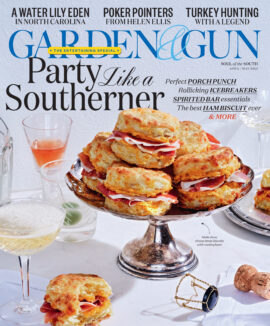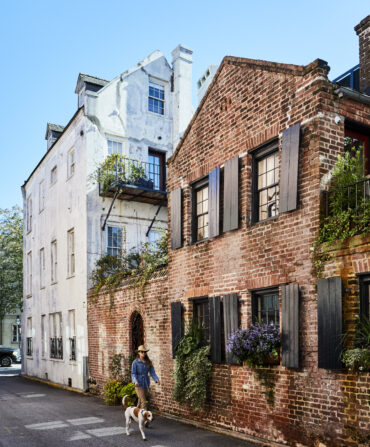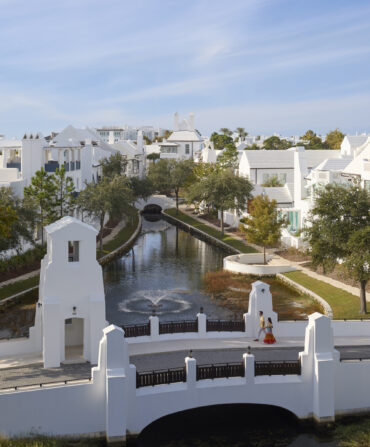Every so often, I find myself trying to figure out how exactly Durham, North Carolina, a city I once thought I could never love, is now a place I will never leave. On the list of reasons are the obvious charms, such as the growing number of award-winning restaurants and a location roughly halfway between the Outer Banks and the Blue Ridge Mountains, making it a perfect base camp for any number of weekend adventures. The mild four-season climate is much more livable than the swampy South Carolina furnace that produced me, and I can’t overlook all the universities, either, which keep a steady stream of sharp minds flowing in. But that’s the chamber-of-commerce stuff that everyone talks about.
When I drill down to what most inspires my ferocious loyalty to the place, it’s this: Durham is quirky and strange and free of glossy pretense. Like Portland, Oregon, or Austin, Texas, it’s a safe harbor for those who don’t quite fit in elsewhere, and frankly don’t want to.
I didn’t always feel so warmly about it. When I first moved here to attend Duke in the late 1990s, the city’s broken skyline of empty tobacco warehouses and old cotton mills didn’t inspire much confidence. Unlike its neighbors Raleigh and Chapel Hill, Durham boasted few of the manicured lots or aspirational manses that many equate (erroneously) with the “successful” South. Everywhere I looked, the seams of struggle showed. “It feels kind of…bombed-out,” I remember telling my family, with much disappointment. “There’s not much going on.”

Photo: Lissa Gotwals
The iconic Lucky Strike water tower at the American Tobacco campus.
That was before I discovered the Full Frame Documentary Film Festival, the Manbites Dog Theater, the Ninth Street Dance studio, and the veritable ant farm of artist collectives and underground galleries that, even back then, were slowly reviving a town that others had written off. The same grittiness that first set me on edge turned out to be Miracle-Gro for creatives and small-business owners, who dug in and supported each other through the toughest of times. And that toughness is what made the place special. Not just the toughness of the city itself, but also the toughness it requires from the people who live there. To really understand it, you have to value the stalwart over the superficial.
From its humble origins as a railway depot to its heyday as a tobacco boomtown, Durham was built by and for working people. Over the years, their ingenuity has proved to be virtually limitless. One of my friends likes to say that our modest city of 260,000 is scrappiness personified, where every day feels “like living in the theme from Rocky.” Survival is virtually baked into the soil. Even before the American Revolution, when a group of small farmers who called themselves Regulators took up arms against the aristocrats who kept them in poverty, this part of the North Carolina Piedmont attracted a strain of misfit who refused to accept injustices politely. In 1910, it was Durham’s “Black Wall Street” that Booker T. Washington praised as a beacon for African American entrepreneurship, and in 1957, Durham saw one of the first civil rights sit-ins. Three years later, Martin Luther King, Jr., delivered his famous “fill up the jails” speech from the pulpit of Durham’s White Rock Baptist Church.

Photo: Lissa Gotwals
The hotel’s meticulously preserved midcentury facade.
You know that a place has really done a number on you when you move away and feel a paralyzing sense of regret, the kind that stung me when I left Durham for New York City in 2005. I had no sooner put North Carolina in the rearview mirror than I started keeping a tab of what I missed: Walking along the Eno River on fall days, and stretching out with a book in the Sarah P. Duke Gardens during the spring. Winding through sidewalk neighborhoods filled with mill houses, and watching indie films from the balcony of the old Carolina Theatre. Cheering for friends in the North Carolina Pride Parade. I especially missed the small comforts of familiar faces, like the staff at Elmo’s Diner, all of whom have known my name and order since 1999. But the most disheartening aspect of being a New Yorker was that the crushing expense of living there often kept me from attending the very plays, concerts, and art exhibitions that had inspired me to move in the first place.
I realized that I had never been more plugged in to my community than when I lived in Durham. It made my life bigger, whereas New York shrank it down. So, after three years, I moved back. Oddly enough, that was right about the time when Durham’s growth began to accelerate at a pace that still takes some getting used to. Those empty buildings rapidly filled with sushi bars, artisan bakeries, high-end boutiques, local breweries, and rooftop bars. Today, it’s just as easy to find fair-trade pour-over coffee and single-origin chocolate as it is to find biscuits and fried chicken. The streets downtown, long deserted, are now filled with teenagers shuttling to and from the skate park, and families milling around the farmers’ market. As though that isn’t surreal enough, Paris and London are both one direct flight away.
A part of me worries, sometimes, about what this trendy makeover will mean for Durham’s citizens in the long run—will all this change price out families that have lived here for generations?—but deep down I know that Durham will always be Durham. A little off-kilter, a little stubborn, a little rough around the edges. Diversity and social conscience are cherished, but snobbery and sanctimony are not. It’s large enough that you never feel suffocated, but small enough that you never feel adrift. It’s just enough everything.









